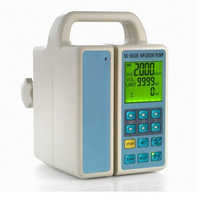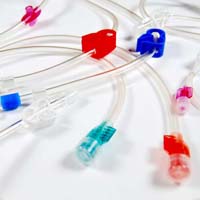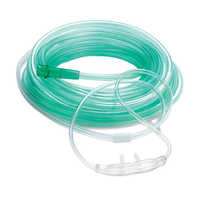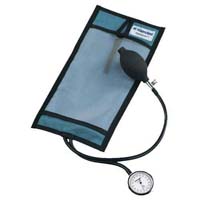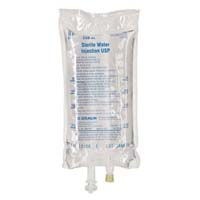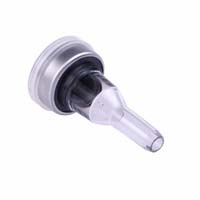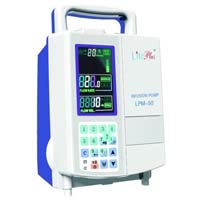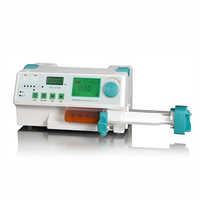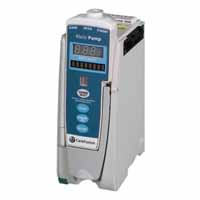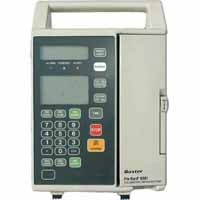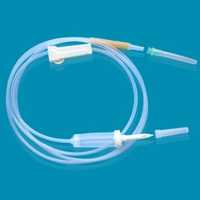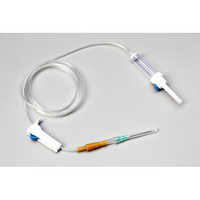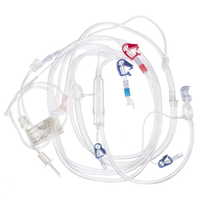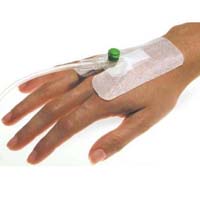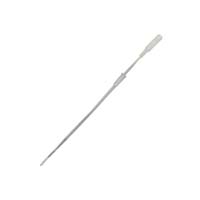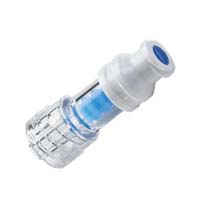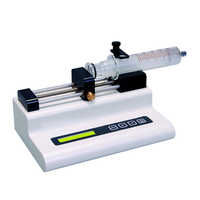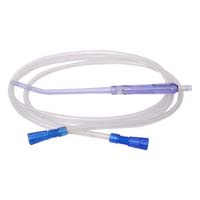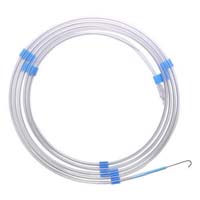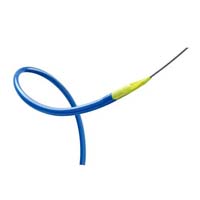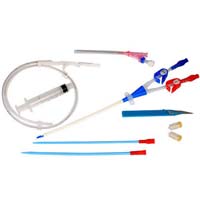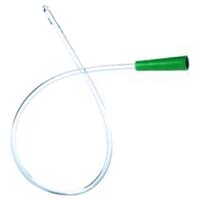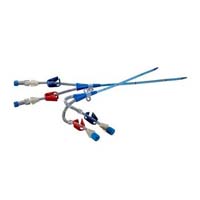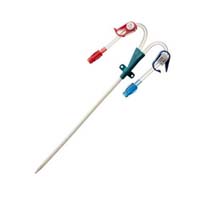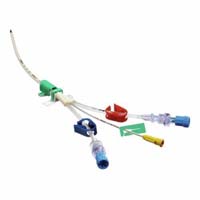IV & Infusion Set
(1022 products)
Related Categories
Adult Diapers
Autoclaves & Sterilizers
Ayurvedic Therapy Equipment
Blood Pressure Monitors
Cold Chain Equipment
Dental Equipment & Supplies
Diagnostic Equipment
Disinfection Equipment
Disposable Gloves
ECG Machines
ENT Equipment & Supplies
First Aid
Gloves & Mittens
Health Care Equipment
Hearing Aids
Hospital Beds
Hospital Equipment
Hospital Furniture
Hospital Holloware
Hospital Uniforms
ICU Equipment
IV & Infusion Set
Imaging Equipment
Laparoscopic Instruments
Medical & Hospital Disposables
Medical Equipment
Medical Gases
Medical Implants
Medical, Diagnostic & Hospital Supplies
Needle & Syringe Destroyer
Needles & Syringes
Obstetrics & Gynecology Instruments
Ophthalmic Instruments
Orthopedic Equipment
Orthopedic Implants
Orthopedic Supplies
Orthopedic Surgical Instruments
Oxygen Setup
Personal Safety Equipment
Physiotherapy Equipment
Pulse Oximeters
Rehabilitation Aids
Surgical Dressings & Disposable
Surgical Instruments
Temperature Instruments
Ultrasound Machines
Veterinary Equipment
Veterinary Products
Walking Aids
Wheel Chairs
X-Ray Chemicals
X-Ray Machine
Top IV & Infusion SetCategories
Explore More Categories
Measured Volume Set Application: Medical
Type - Basic Type
Material - PVC
Application - Medical
5 Years
Business Type: Manufacturer | Exporter
M/S WONDER PRODUCTS CO
High Performance Syringe Pump Application: Hospital
Price: 30000 INR (Approx.)/Piece
MOQ - 1 Piece/Pieces
Color - White and Green
Material - Other
Application - HOSPITAL
13 Years
Business Type: Manufacturer | Distributor
BIO-X
Metronidazole Infusion Use Type: Single Use Only
MOQ - 2000 Unit/Units
Disposable - Yes
Use Type - Single Use Only
10 Years
Business Type: Manufacturer | Distributor
SALVAVIDAS PHARMACEUTICAL PVT. LTD.
Verified Exporter
( Accepts only Foreign Inquiry)
3000 Floskan Application: Hospital Use
MOQ - 2 Unit/Units
Type - Functional Type
Color - White, Sky Blue
Application - Hospital Use
1 Years
Business Type: Trading Company
Prince Surgical Mall
Microdrip Infusion Set Application: Hospital
MOQ - 1 Unit/Units
Material - PVC
Application - Hospital
Disposable - Yes
11 Years
Business Type: Manufacturer | Exporter
YASH CARE LIFESCIENCES
Blood Trans Infusion Set Application: Medical
MOQ - 30000 Piece/Pieces
Material - PVC
Properties - High Quality
Application - Medical
2 Years
Business Type: Manufacturer | Exporter
HUTCH SURGICAL
White Medical Tape
Price: 400 INR (Approx.)/Piece
MOQ - 60 Piece/Pieces
Color - White
10 Years
Business Type: Manufacturer | Distributor
HEMANT SURGICAL INDUSTRIES LTD.
Pvc Plastic Iv Cannula
MOQ - 100 Piece/Pieces
Material - PVC
Properties - High Quality
Disposable - Yes
2 Years
Business Type: Manufacturer | Exporter
SKY MEDICARE PRIVATE LIMITED
Disposable Syringe
Price: 100.00 - 1000.00 INR (Approx.)/Piece
MOQ - 1000 Piece/Pieces
11 Years
Business Type: Manufacturer | Supplier
APEX MEDICAL DEVICES
Microdrip Iv Infusion Set Application: Medical Industry
MOQ - 50 Piece/Pieces
Type - Basic Type
Material - PVC
Color - White
2 Years
Business Type: Manufacturer | Distributor
UNISURGE ENTERPRISES PRIVATE LIMITED
Canula Fixing Strip Shelf Life: 1 Years
Price: 12 INR (Approx.)/Piece
MOQ - 1000 Piece/Pieces
Shelf Life - 1 Years
4 Years
Business Type: Manufacturer | Distributor
DR. SABHARWALS WOUND CARE
Salter Labs Cannula â 7 Meters Grade: Industrial
Price: 1100 INR (Approx.)/Unit
MOQ - 1 Unit/Units
3 Years
Business Type: Manufacturer | Service Provider
MEDIKART HEALTHCARE SYSTEMS PVT. LTD.
Indian Inquiries Only
Transparent White Infusion Set
Price: 4.50 INR (Approx.)/Piece
MOQ - 3000 Piece/Pieces
Type - Basic Type
Material - Other
Properties - Non Toxic, Non Pyrogenic
15 Years
Business Type: Manufacturer
K. S. SURGICAL PVT. LTD.
As Per Availability Medical Infusion Set
MOQ - 100 Piece/Pieces
Material - PVC
Properties - High Quality
Color - As Per Availability
1 Years
Business Type: Manufacturer | Supplier
ASHRI MEDICO SURGICALS PRIVATE LIMITED
Transparent Oem Needless Connector Infusion Set
Price: 1 INR (Approx.)/Piece
MOQ - 10,000 Piece/Pieces
Material - Other
Color - Transparent
Disposable - Yes
5 Years
Business Type: Manufacturer | Supplier
YIN TECHNOLOGIES INDIA PRIVATE LIMITED
Disposable Yankauer Suction Set Application: Hospital
Price: 57 INR (Approx.)/Piece
MOQ - 200 Piece/Pieces
Application - Hospital
Disposable - Yes
Use Type - Single Use Only
8 Years
Business Type: Manufacturer | Distributor
DASHMESH SONAIL HEALTHCARE PVT. LTD.
Indian Inquiries Only
Medical Syringe Pump Application: Industrial
Price: 21000 INR (Approx.)/Unit
MOQ - 1 Unit/Units
Color - Grey
Application - Industrial
Disposable - No
2 Years
Business Type: Exporter
UM HEALTHCARE INDIA PRIVATE LIMITED
Lcd Infusion Pump Application: Hospital
Price: 16500 INR (Approx.)/Unit
MOQ - 1 Unit/Units
Type - Other, LCD Infusion Pump
Material - Other, Plastic
Color - White
Business Type: Supplier | Service Provider
HINDUSTAN HEALTH & WELLNESS SOLUTION
Indian Inquiries Only
Volumetric Syringe Pump For Pesticide, Capacity: Up to 25 Fills/Min
3 Years
Business Type: Manufacturer | Exporter
NAVDURGA ENGINEERS
Blood Transfusion Set
Price: 25.00 - 35.00 INR (Approx.)/Piece
MOQ - 10000 Piece/Pieces
2 Years
Business Type: Manufacturer | Exporter
LIFESURGE HEALTHCARE PVT LTD
Syru4004 Infusion Syringe Pump Application: Diagnostic Equipment
Price: 22500 INR (Approx.)/Piece
MOQ - 1 Piece/Pieces
Color - White
Type - Functional Type
Material - PVC
3 Years
Business Type: Supplier | Exporter
AMBAY ENTERPRISES
Indian Inquiries Only
Medical Infusion Set Application: Hospital/Clinical
Price: 5.00 - 12.00 INR (Approx.)/Piece
MOQ - 100 Piece/Pieces
Type - Functional Type
Material - Non PVC
Application - HOSPITAL/CLINICAL
11 Years
Response Rate: 74.58%
Business Type: Manufacturer | Exporter
MEDICON HEALTH CARE PVT. LTD.
Hme Filter Application: Clinical
Price: 65 INR (Approx.)/Piece
MOQ - 100 Piece/Pieces
Material - Other, Plastic
Color - White
Application - Clinical
3 Years
Business Type: Manufacturer | Trading Company
MEDX HEALTHCARE
Indian Inquiries Only
Functional Type Medical Syringe Infusion Pumps
MOQ - 1 Piece/Pieces
Type - Functional Type
Application - For Medical
5 Years
Business Type: Supplier | Trading Company
PREMIER MEDICAL CORPORATION
Indian Inquiries Only
Infusion Set With Burette
Price: $ 0..2- $ 0.5 USD ($) (Approx.)/Piece
MOQ - 100000 Piece/Pieces
4 Years
Business Type: Manufacturer | Exporter
ELEMENTO PHARMA
White Wing Huber Needle Set
MOQ - 100 Set/Sets
Type - Other, Wing Huber Needle Set
Color - White
Needle - Yes
2 Years
Business Type: Exporter | Trading Company
NDONCO CARE PRIVATE LIMITED
IV & Infusion Set Manufacturers | Suppliers in India
| Company Name | Location | Member Since |
|---|---|---|
| K. S. Surgical Pvt. Ltd. | Modinagar, India | 15 Years |
| Genuine Medica Pvt. Ltd. | New Delhi, India | 14 Years |
| Bio-X | Mumbai, India | 13 Years |
| Yash Care Lifesciences | Ahmedabad, India | 11 Years |
| Apex Medical Devices | Ahmedabad, India | 11 Years |
| Medicon Health Care Pvt. Ltd. | Navi Mumbai, India | 11 Years |
| Salvavidas Pharmaceutical Pvt. Ltd. | Surat, India | 10 Years |
| Hemant Surgical Industries Ltd. | Mumbai, India | 10 Years |
| Dashmesh Sonail Healthcare Pvt. Ltd. | Vasai, India | 8 Years |
| M/S Wonder Products Co | Mumbai, India | 5 Years |
What is the Meaning of an IV Set?
The purpose of intravenous (IV) sets is to make the administration of intravenous fluids as simple and risk-free as feasible. There is a wide variety of intravenous (IV) sets available, each of which has its own set of applications and circumstances for which it is most often utilized. In order to provide the appropriate treatment for each patient, it is essential to have a solid understanding of the many kinds of IV sets as well as their individual applications.
What Is the Usage & Advantages of IV Set?
- It is the quickest approach to provide the medicine and restore the fluids that have been lost.
- Bolus, drip, or prolonged infusion may all be used as different types of infusion treatment.
- It makes it possible to administer additional drugs by injecting them into the IV set's injection site. To put it another way, taking numerous drugs is an option.
- It is appropriate for the patient who is unable to take their medicines and nutrition by mouth.
- The fluid may flow from the reservoir bag or bottle into the drip chamber thanks to the spike.
- The solution filter removes debris and other particles from the intravenous fluid.
- Drip Chamber (sometimes referred to as a Fluid Chamber): Inside the drip chamber, we are able to see the fluid as it drips down into the IV tubing. Therefore, taking measurements of the manual IV setup is helpful. The rate of flow may be estimated by keeping track of the number of droplets that fall in a certain amount of time.
- Tubing is what makes it possible for fluid to be transferred from a reservoir bag to a patient.
- Controlling the amount of fluid that is withdrawn from an intravenous line may be accomplished using a device called a roller clamp or regulator.
- When the IV set is being used, the Injection Site enables the IV injection to be administered into the cannula.
- This is the Luer Connector, and it attaches to the IV cannula.
- The cannula may be injected with medication with the use of a needle.
Types of the IV Set
- Filtered: The removal of air emboli, particulate matter, germs, and other pollutants from the drug or fluid that is being used is the primary function of the micron-sized filter that is included in filtered intravenous (IV) sets. This safeguards the patient from complications such as phlebitis, an inflammation of the veins, which may be brought on by germs or particles that may be present in the drug that is being given to them. These intravenous sets are compatible with a wide variety of drugs and solutions. The filters that they use are available in a broad variety of diameters, ranging from.22 microns all the way up to 5 microns in diameter. Because of this, they are able to filter out any particles, regardless of how little or huge they are.
- Gravity Tubing: The most common and traditional kind of intravenous (IV) set is called gravity tubing. Patients may have medication or solutions administered to them through this kind of tubing, which relies on gravity and flow rate controllers. The patient is covered with a solution-filled bag, which is then hung from a pole above them. The solution is delivered into the patient's circulation at a regulated speed thanks to the pressure of gravity, which forces the solution through the tube and into the patient's body.
- Vented: Ventilated IV setups may be used with either glass or plastic IV containers due to their adaptability. Unless you make a hole in one of these rigid containers, the liquid won't be able to flow out of it. These IV setups come with a vent (air inlet) that is located just above the drip chamber and may be opened and closed as needed. This permits air to enter the container, which then causes the drug or solution to be displaced during the infusion process.
- Non-Vented: Non-vented intravenous sets do not have any vents in the tubing, in contrast to vented intravenous sets. Because this kind of tubing generates a vacuum, they are perfect for use with plastic bags that can be collapsed as the fluid is drained out of them. This enables the container to become smaller or collapse completely as the fluid is removed. Before it can be used, non-vented tubing must first be back primed or flowed to expel any air that may be trapped within. This is an essential point to keep in mind.
What is an IV Cannula?
- They will ask the victim to lie down or sit down, and then they will ask them to stretch one of their arms out to the side while it is exposed.
- They will decide where in the arm of the individual to implant the catheter. In most cases, this will be the person's non-dominant side, and the location involved will be one in which the veins in the person's skin are most visible.
- They are going to use an alcohol wipe to clean up this region.
- They are going to wrap a tourniquet around this region. A tourniquet is a belt that medical professionals tighten around a patient's limb in order to restrict the flow of blood. Even though it could be unpleasant, the medical professional or nurse will only hold it in place for approximately a minute at most.
- The individual will then be informed that they will feel a scrape, and the needle will then be inserted into the vein.
- The only purpose of the needle is to create a small hole in the vein and the surrounding skin so that the cannula may be placed into the vein. After the needle has been inserted into the vein, it is removed while the cannula is slipped over the needle and into the vein.
- After that, a dressing, such as a specialized bandage or a wrap, is used to dress the cannula and keep it in place.
- The only discomfort felt during the insertion of an IV cannula is a scratching sensation caused by the needle when it makes contact with the skin.
- However, if at any time during the procedure a person begins to feel dizzy or disturbed, they are free to discuss their concerns with the nurse or physician who is inserting the cannula.
FAQs: Iv & Infusion Set
- Roller Clamp.
- T Connector.
- Burette
- IV Drip Chamber
- Vented Spike.
- IV drip chamber
- Needle-Freeee Burette
Related Categories
Related Categories
Adult Diapers
Autoclaves & Sterilizers
Ayurvedic Therapy Equipment
Blood Pressure Monitors
Cold Chain Equipment
Dental Equipment & Supplies
Diagnostic Equipment
Disinfection Equipment
Disposable Gloves
ECG Machines
ENT Equipment & Supplies
First Aid
Gloves & Mittens
Health Care Equipment
Hearing Aids
Hospital Beds
Hospital Equipment
Hospital Furniture
Hospital Holloware
Hospital Uniforms
ICU Equipment
IV & Infusion Set
Imaging Equipment
Laparoscopic Instruments
Medical & Hospital Disposables
Medical Equipment
Medical Gases
Medical Implants
Medical, Diagnostic & Hospital Supplies
Needle & Syringe Destroyer
Needles & Syringes
Obstetrics & Gynecology Instruments
Ophthalmic Instruments
Orthopedic Equipment
Orthopedic Implants
Orthopedic Supplies
Orthopedic Surgical Instruments
Oxygen Setup
Personal Safety Equipment
Physiotherapy Equipment
Pulse Oximeters
Rehabilitation Aids
Surgical Dressings & Disposable
Surgical Instruments
Temperature Instruments
Ultrasound Machines
Veterinary Equipment
Veterinary Products
Walking Aids
Wheel Chairs
X-Ray Chemicals
X-Ray Machine

